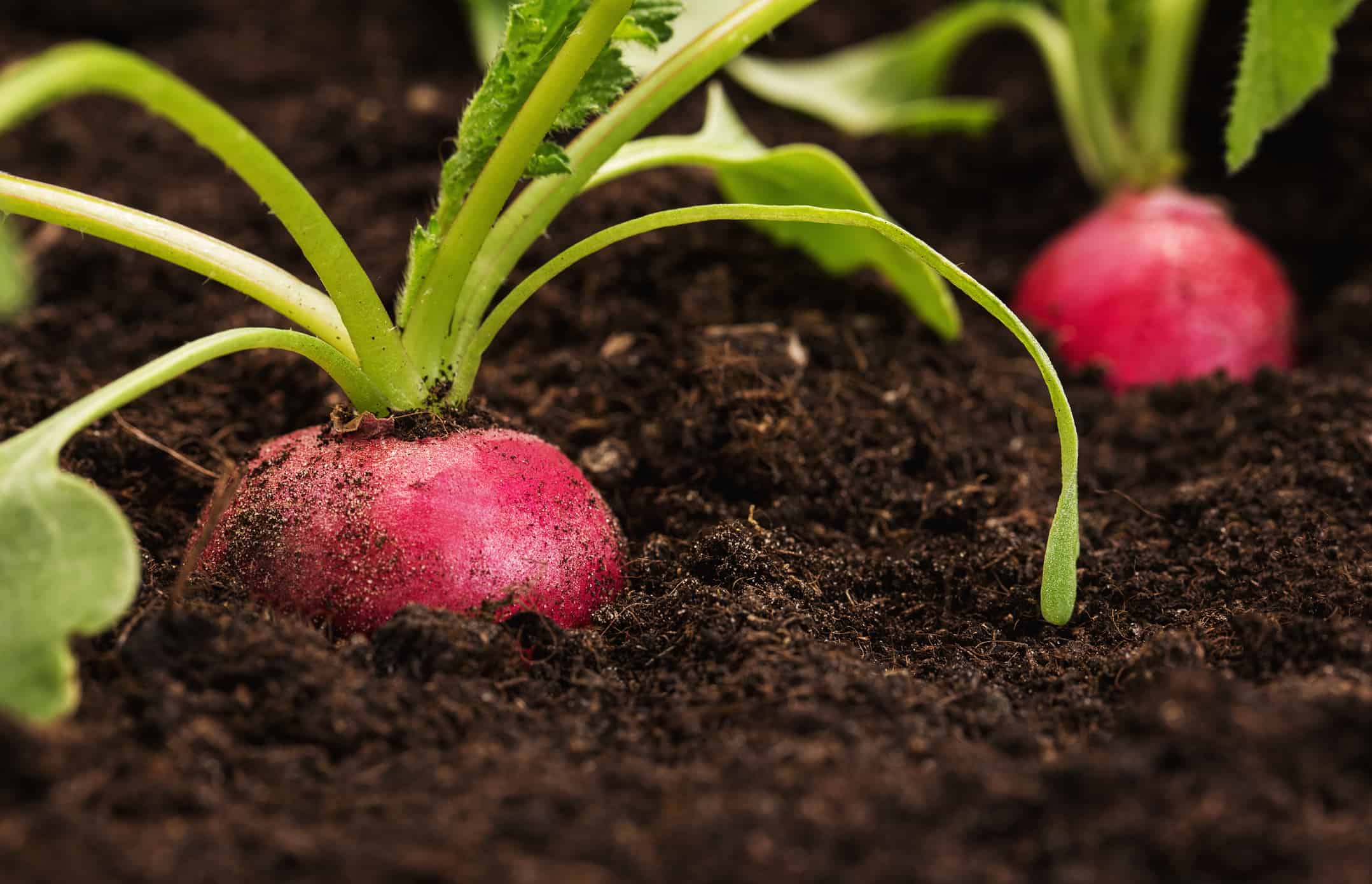A surprising number of vegetables start with R. Some are actually fruits that are used like vegetables, but at least one is a rare vegetable that’s used as a fruit. Here are 26 vegetables whose name starts with R.
1. Radish

People love radishes for their crunch and sharp, peppery taste.
©Andrii Zastrozhnov/Shutterstock.com
Eaten since antiquity, the radish is a root vegetable and a brassica, which means it’s related to such vegetables as cabbage and broccoli. Radish is prized for its sharp, spicy taste and crunch and is often eaten raw. Depending on the species and cultivar, a radish root can be round, tapered, or in the shape of a cylinder like daikon radish. Though the flesh of most radishes is white, their skin can be a variety of colors. It is best to eat a radish while it’s young, for it gets tough, woody, and bitter when it matures. The radish is low in calories and fat and is a good source of Vitamin C.
2. Rutabaga
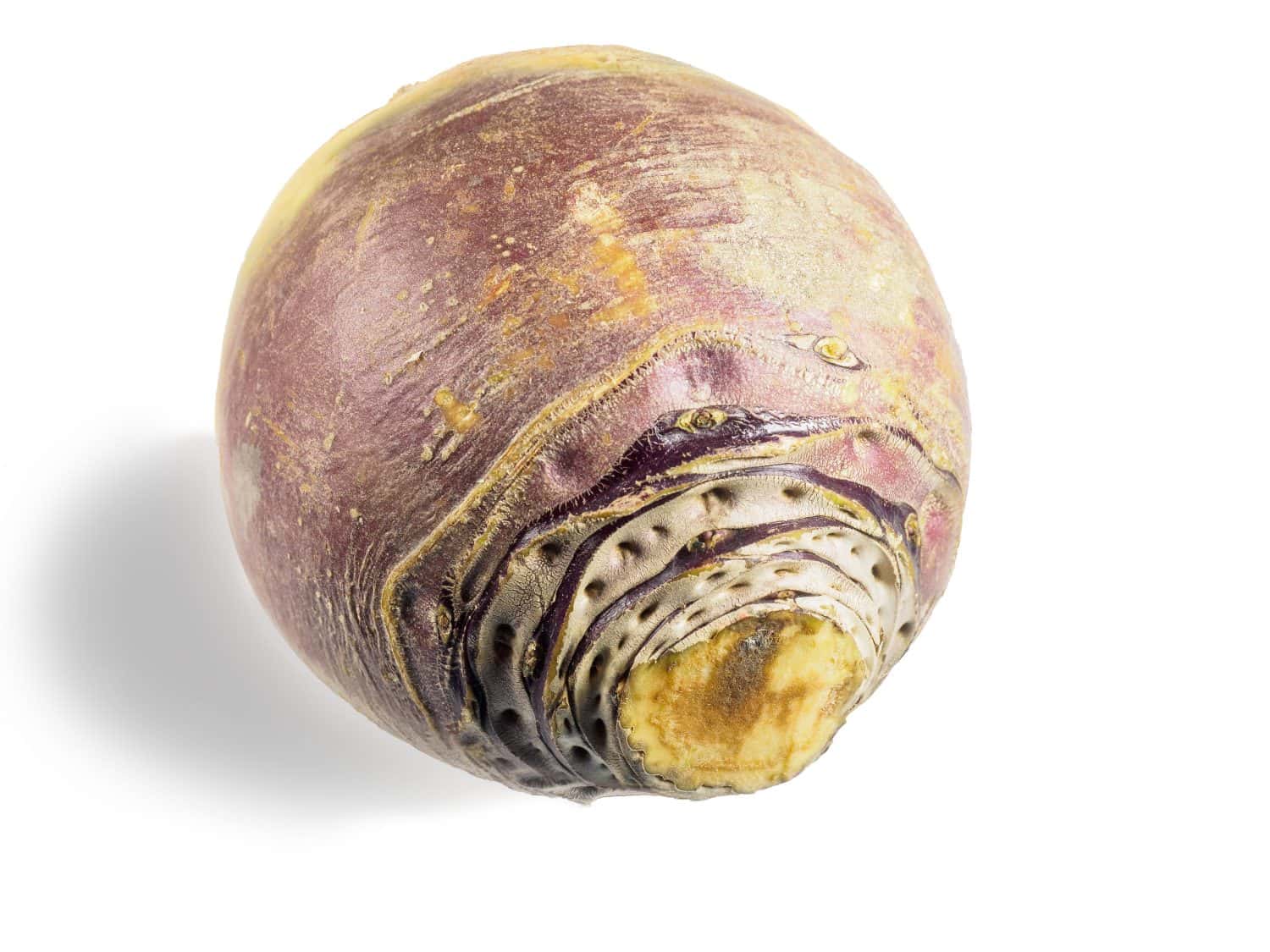
Because they grow wild in Sweden, rutabagas are also called Swedes.
©pr2is/Shutterstock.com
The difference between a rutabaga and a turnip is that a rutabaga is larger and yellow while a turnip is small, white, and purple. The leaves of the rutabaga are eaten as well as the root. Because a botanist first saw this vegetable growing wild in Sweden in the 17th century, rutabagas are also known as Swedes. Rutabagas can be roasted, mashed, and cooked in casseroles. They’re often part of a holiday meal in European countries such as Finland, Sweden, Norway, and Scotland. Rutabagas are also part of Canadian Christmas cakes. This vegetable is nutritious and a good source of dietary fiber and Vitamin C.
3. Red Cabbage

The pH of the soil decides how red a red cabbage is.
©iStock.com/MamaMiaPL
The color of red cabbage depends on the soil it grows in. If the soil is acidic, the cabbage is more red. Neutral soil grows purple cabbages, and basic soil produces cabbages that are more like the usual greenish yellow. Indeed, red cabbage juice is a great pH indicator.
Enjoy red cabbage cooked or raw. It’s braised, boiled, and even used in stir-fries such as Vietnamese fried noodles. The addition of green apples gives the flavor of cooked red cabbage a delicious kick. Red cabbage is made into coleslaw and is the star of German meals like Sauerbraten. This vegetable that starts with R is surprisingly high in protein and is a good source of vitamins C and K.
4. Romaine Lettuce
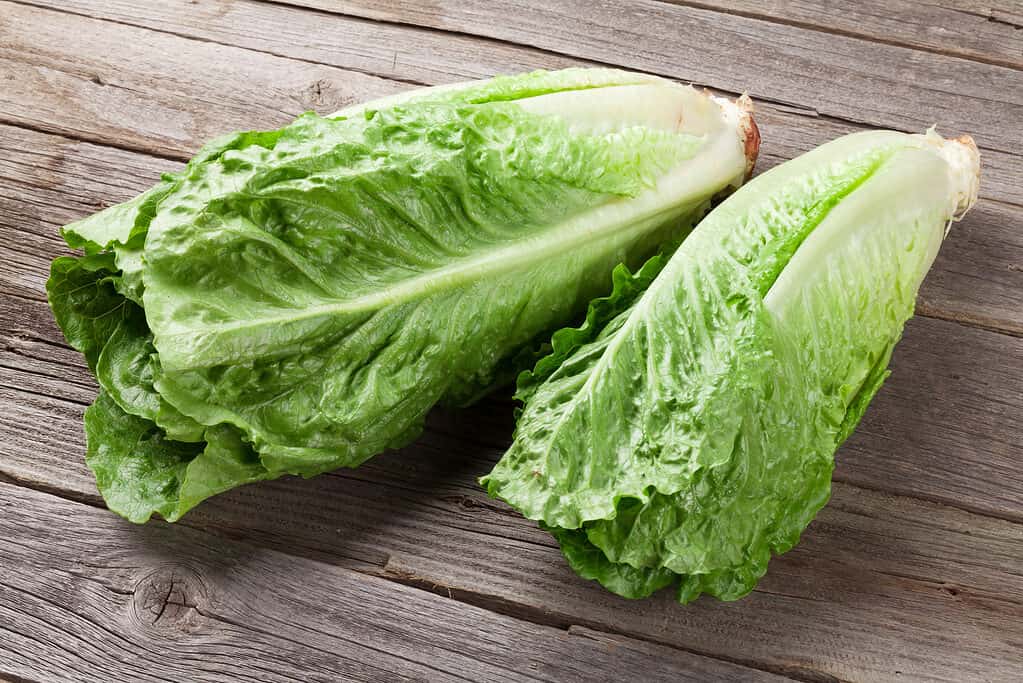
This lettuce has been around since the time of ancient Rome.
©iStock.com/karandaev
Also called cos lettuce, this vegetable is notable for its tall green leaves with central ribs. It’s been known since antiquity but was only described in English in 1699. The lettuce is famous for being the type used in Caesar salad. The dark green leaves are sturdy enough to be cooked, and they can be used in soups or wrapped around wedges of brie cheese and baked. A cup of this lettuce is rich in potassium, Vitamin C, and calcium. Like other types of lettuce, Romaine is mostly water and just the thing to enjoy if you’re on a diet.
5. Radicchio
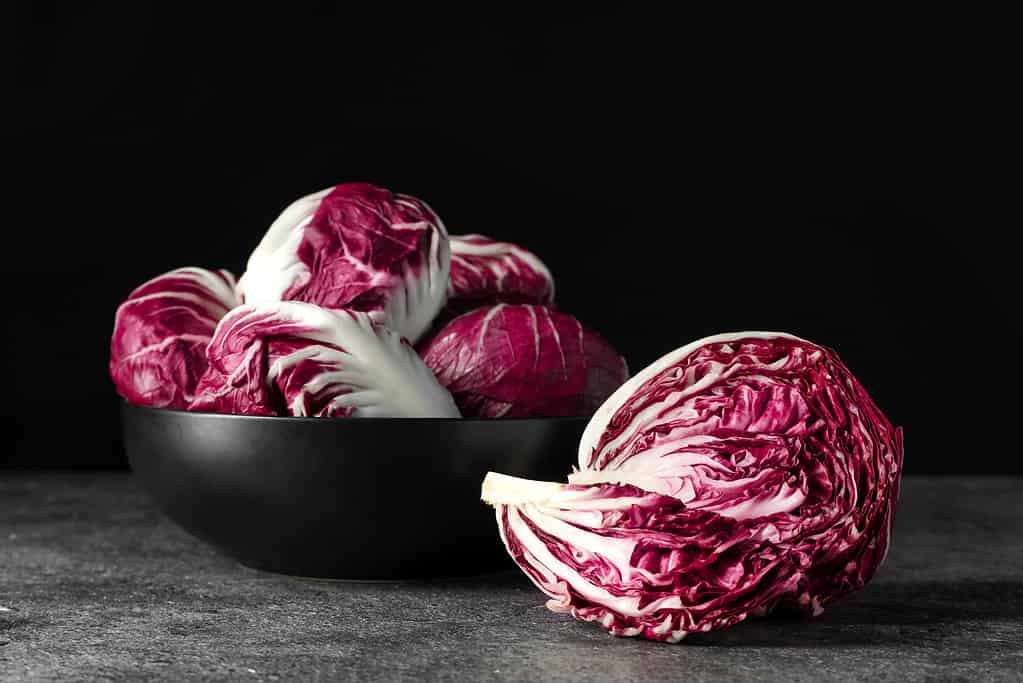
This vegetable that starts with R resembles red cabbage, but they’re not related.
©Liudmila Chernetska/ via Getty Images
Though it often looks like a small red cabbage, cabbages and radicchio are not related. Radicchio is a form of chicory and has been known since antiquity. Radicchio has its origins in Italy, and cultivars are named for the region where they’re grown. Some have long heads, others are globular, and some look like flowers. These varieties are grown with painstaking care to make sure they are the perfect color and flavor. Radicchio is often cooked on the grill and added to pasta and risotto. If you roast, grind and then brew the roots, you can drink them instead of coffee. Radicchio is a good source of folate and Vitamins C and E. It’s extraordinarily rich in Vitamin K, which is necessary for wound healing.
6. Romanesco Broccoli
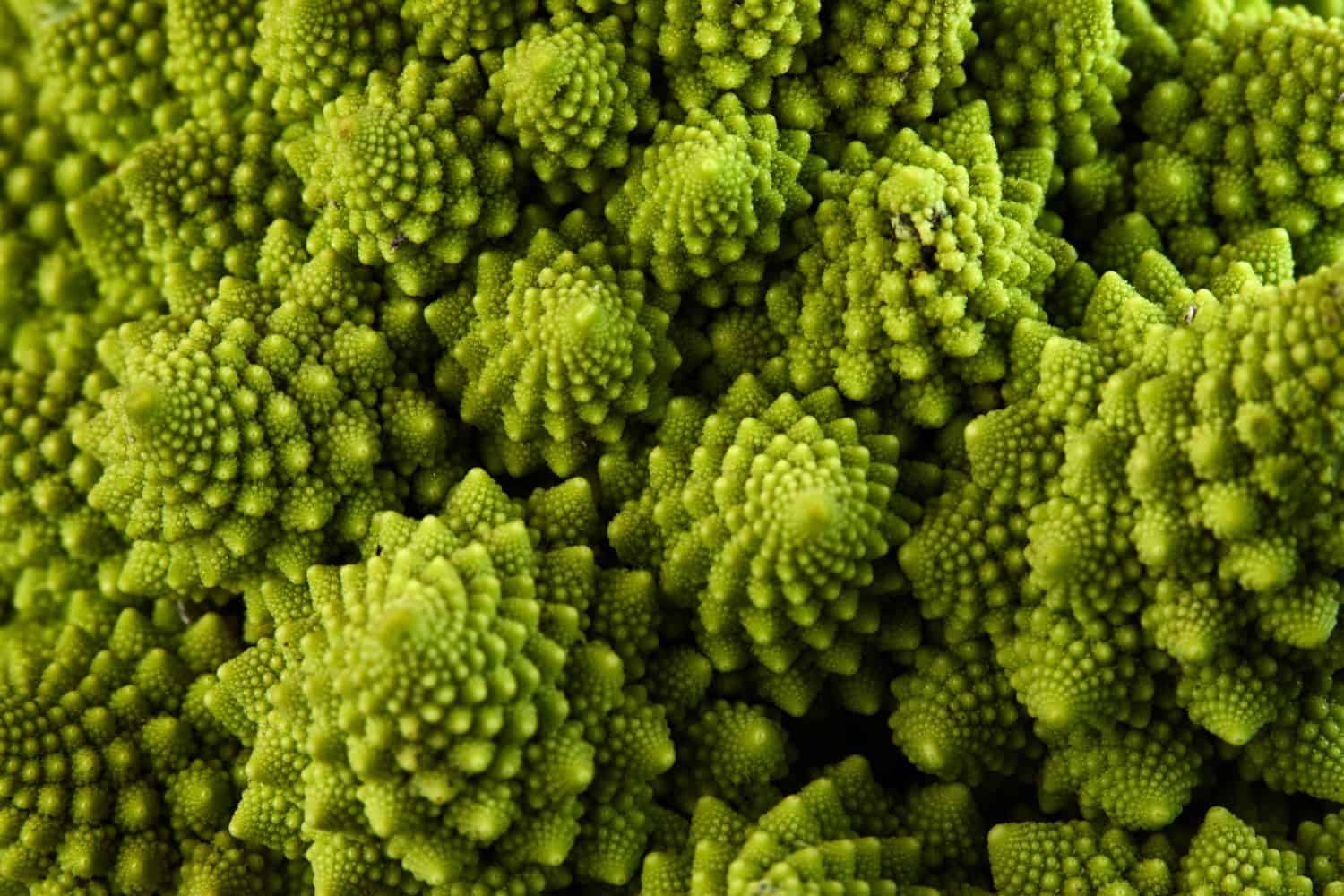
Beautiful romanesco broccoli is a natural fractal.
©J_K/Shutterstock.com
This vegetable intrigues with its light green color and amazing form. It’s actually not a type of broccoli but a type of cauliflower. The look of the vegetable is amazing. Basically, it’s a fractal, with each green bud made up of smaller buds in a spiral. You can use it as you would cauliflower, but unlike broccoli or cauliflower, Romanesco doesn’t get mushy when it’s cooked for a while. It is good in soups, stews, casseroles, and raw as a crudité. Romanesco is a good source of dietary fiber and Vitamins C and K.
7. Rhubarb
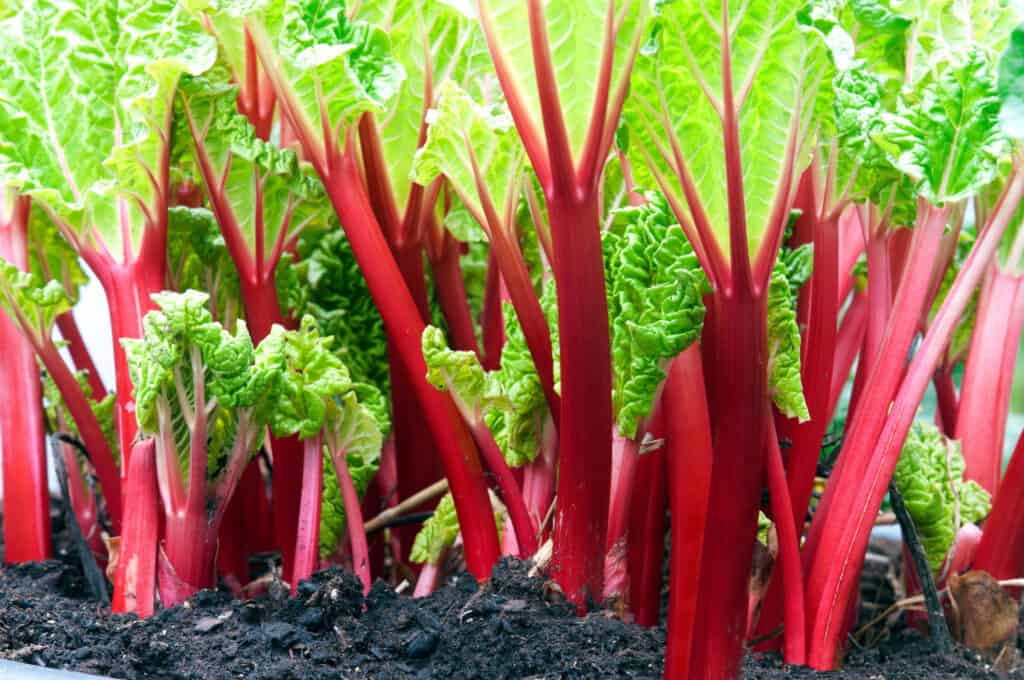
This vegetable that starts with R is used like a fruit.
©HVPMdev/Shutterstock.com
Rhubarb is that rare vegetable that is used as a fruit. You can eat the crisp red stalks raw, but they’re most often cooked and used in desserts. The taste is strong and pleasantly tart, especially when paired with sugar. Rhubarb is also used to make wine.
The leaves of the rhubarb plant are toxic, and the stalks shouldn’t be eaten after a hard freeze. The cold actually makes the toxin, oxalic acid, pass from the leaves down into the stalks. People have cultivated rhubarb for over 1,000 years, but it’s only recently that it’s been used as a food. Before, it was considered a medicinal plant and was extremely expensive. It is a good source of Vitamins C and K.
8. Roselle

The calyces of roselle make a delicious, cooling drink.
©Jr images/Shutterstock.com
Native to West Africa, roselle is another type of vegetable that’s often used as a fruit. It’s now found in the West Indies, Australia, and Asia. The fleshy red sepals that support the plant’s flowers, called a calyx, are used to make drinks, and the leaves are used to make chutneys and soups. The leaves are also cooked with lentils, herbs, chicken, pork, or fish. The drink is made by boiling the calyces in water and adding sugar and spices or a drop or two of rum. Roselle buds are also used to make pickles and jams.
9. Rocket
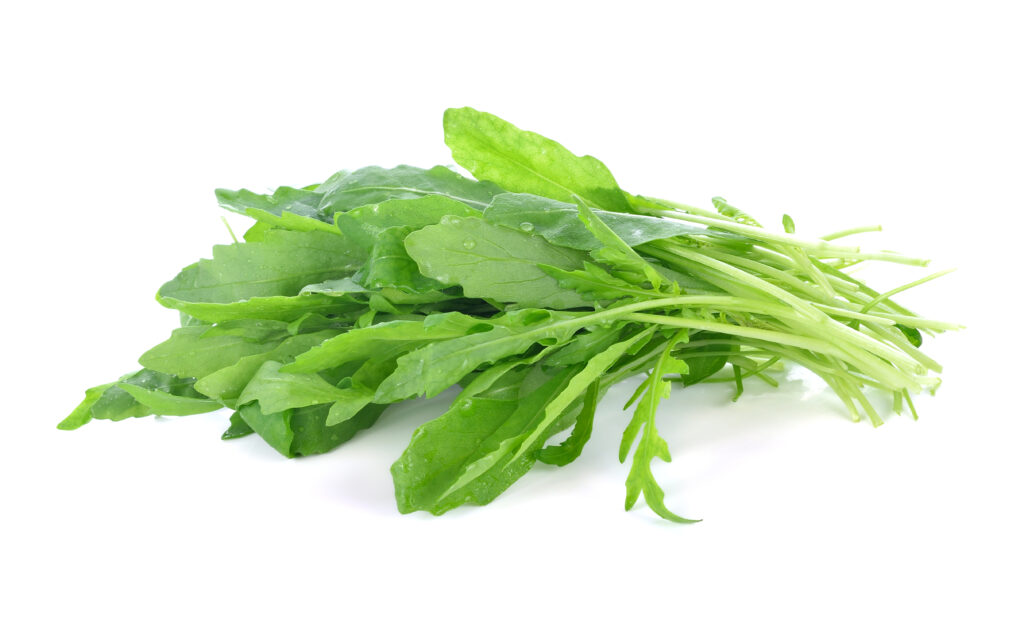
Arugula is another name for rocket.
©panuwat panyacharoen/Shutterstock.com
There are two types of rocket. One is known more commonly as arugula, and the other is perennial wall rocket. Used as a salad vegetable, arugula is prized for the sharp and peppery flavor that people have enjoyed since the time of ancient Rome. Indeed, back in the day arugula was considered an aphrodisiac. It’s not just used in green salads but is tossed with pasta and made into sauces. Arugula is rich in Vitamin K and has good amounts of folate, Vitamin C, beta-carotene, calcium, magnesium, and manganese.
Perennial wall rocket is found in Europe and the western part of Asia. Though this rocket and arugula aren’t closely related, they are used in pretty much the same way and share a pungent taste.
10. Red Onion
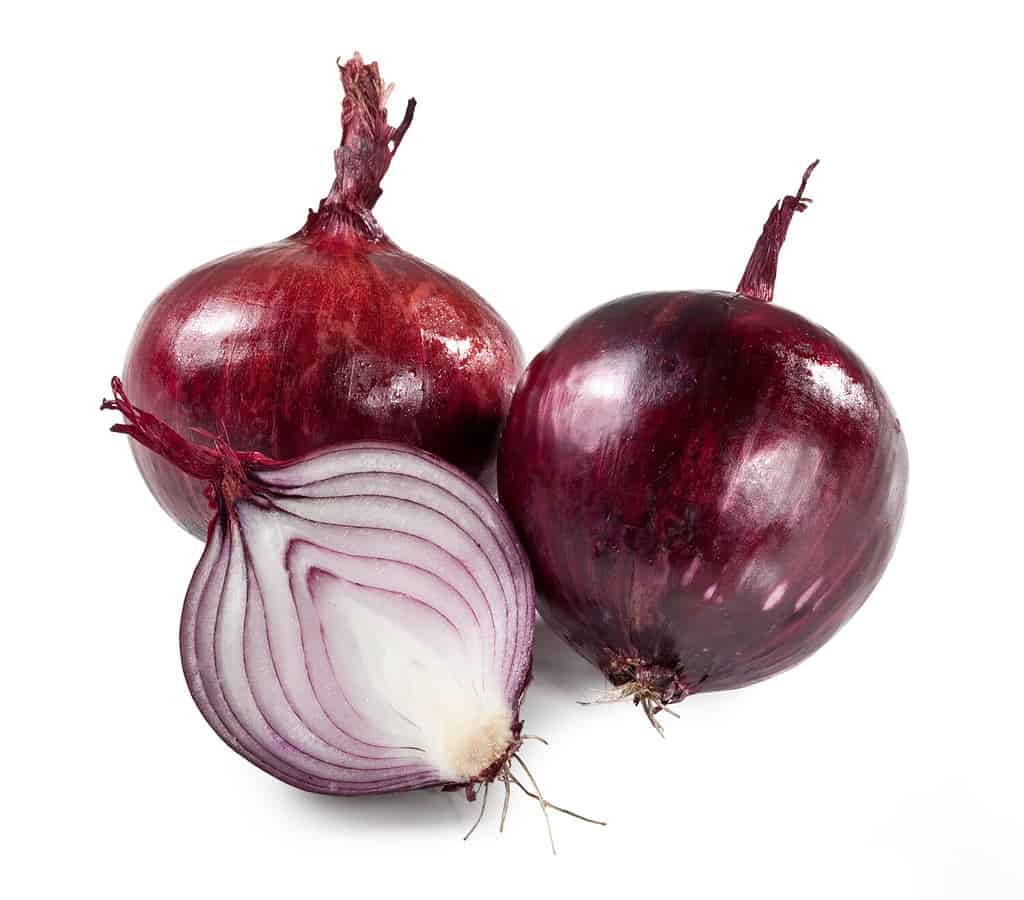
These onions are milder than white or yellow onions.
©Italian Food Production/Shutterstock.com
This vegetable is notable for its red skin, red-tinged white flesh, and gentler flavor than yellow or white onions. For many people, the flavor of a red onion is mild enough for them to eat the vegetable raw. It’s also higher in fiber and flavonoids than its white and yellow brethren. Red onions are used the way other onions are, which means they’re used in stews, soups, stir-fries, casseroles, and onion tarts. They’re also baked, grilled, pickled, and used in kimchi.
11. Rapini

This vegetable is also called broccoli rabe.
©iStock.com/eZeePics Studio
Also called broccoli rabe, the stems, leaves, buds, and flowers of this vegetable are edible. It has broccoli-like buds, but they don’t grow into regular broccoli’s trademark heads. The buds sometimes open into yellow flowers. Unlike broccoli, the taste of rapini is bitter with hints of almond. Though it may be uncommon in American cuisine, rapini is often found in Roman and Southern Italian dishes. Rapini is an ingredient in soups, pasta dishes and even sandwiches. It goes well with sausage, peppers, and cheeses and can be sautéed with garlic in olive oil.
Rapini is a good source of Vitamin A, B6, B9, B1, and C. It is rich in Vitamin K and provides 213 precent of the daily value of this vitamin. The vegetable also has a good amount of iron, manganese, and phosphorous.
12. Rapeseed Greens

Use these greens as you would turnip greens, mustard greens, or kale.
©Andrei Dubadzel/Shutterstock.com
Native to Northern Europe, this vegetable is mainly grown for its seeds which are used to make canola oil. The greens shouldn’t be overlooked, for they have a pleasingly peppery, bitter taste. Rape is a brassica, and like most brassicas is a cool season plant. The leaves resemble those of the rutabaga plant, and they are best eaten when young. You can cook them the way you cook kale, which means they can be pan or stir-fried, baked, broiled, and put in soups, casseroles and salads.
13. Russian Kale
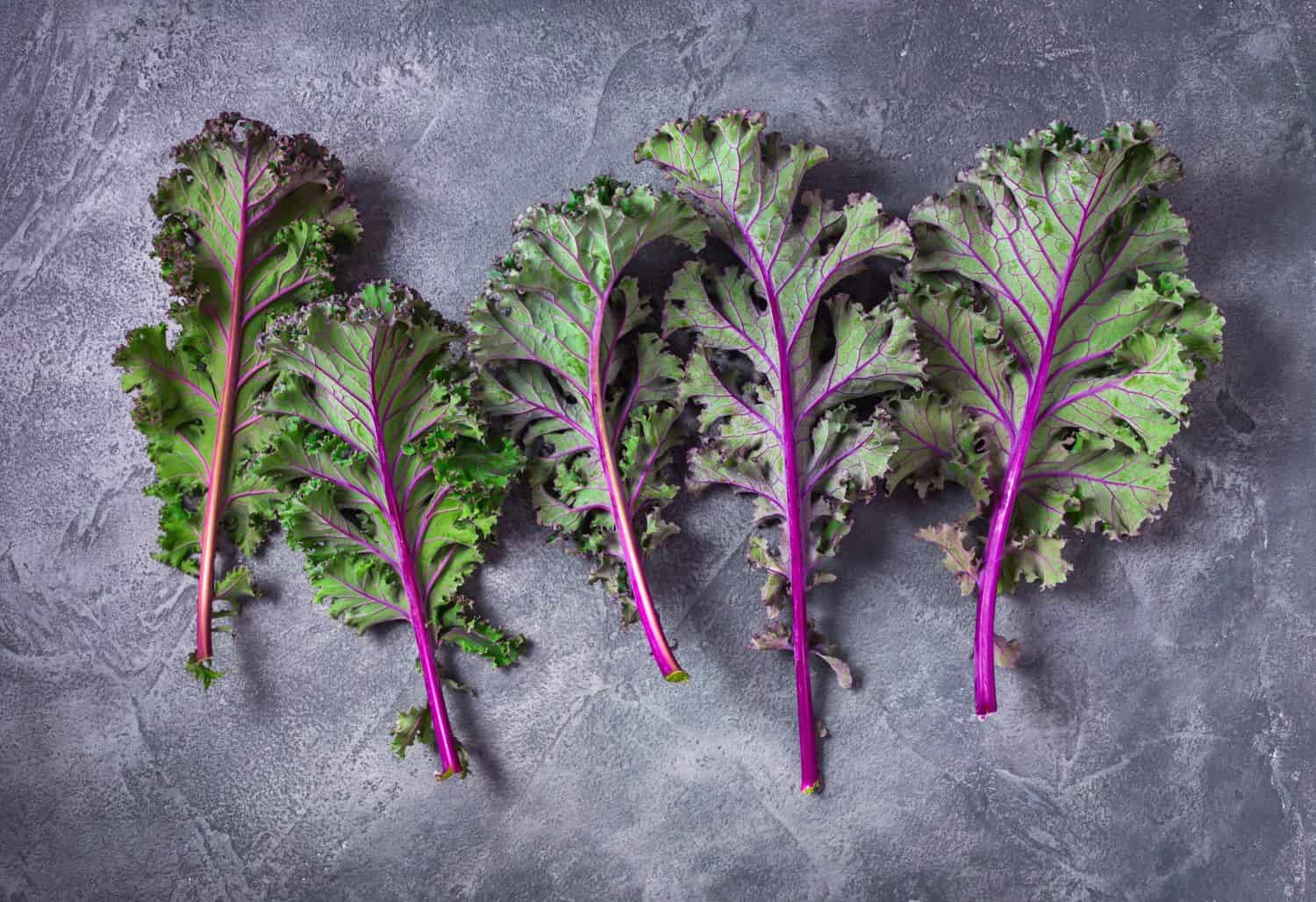
This type of kale was brought from Russia to North America in the 19th century.
©yingko/Shutterstock.com
This vegetable is one of several varieties of kale. Though it has its origins in Asia Minor and the eastern area of the Mediterranean, it found its way to Russia, and from there to Canada and the United States. Russian kale is known for its plainer, flatter leaves, which contrast with the curly-leafed kale that’s often found in the supermarket. Russian kale adores winter weather, and its leaves get sweeter after a hard frost.
You can use Russian kale in nearly every recipe that calls for kale. This means casseroles, soups, stews, and salads. Substitute it for romaine lettuce in Caesar salad, or slow cook it in the oven or microwave it for a few minutes to make kale chips. Kale is a good source of dietary fiber, Vitamin A, thiamine, riboflavin, Vitamin B5, B6, B9, calcium, iron, magnesium, manganese, phosphorus, and potassium. It gives you 145 percent of the daily value of Vitamin C and an amazing 371 percent daily value of Vitamin K.
14. Rainbow Chard

Chard with different color stems are sold in bunches as rainbow chard.
©zi3000/Shutterstock.com
This leafy green vegetable is known not just for its delicious leaves but for the beauty of its stalks. They can be yellow, red, or white, and when they are bundled together, they’re sold as rainbow chard. The large, wrinkly, deep green leaves of chard are highly nutritious, and they’re sometimes cooked separately from the colorful stalks. The taste of both leaves and stalks is a bit bitter, but the bitterness goes away after the vegetable is cooked.
VA relative of the beet, rainbow chard, including red Swiss chard, is enjoyed in soups and salads. Leaves and stalks are stir-fried, sautéed or boiled. Rainbow chard is high in Vitamins A, Vitamin C, Vitamin E and is especially abundant in Vitamin K. You’ll also get a good amount of iron, magnesium, potassium and manganese from chard.
15. Radish Sprouts

People love the cunchy, peppery goodness of radish sprouts.
©Bowonpat Sakaew/Shutterstock.com
Not only are the roots and greens of radishes eaten, but the sprouts are as well. They offer a delicious crunch and a pop of radishy flavor when tossed into salads. Sprouts are best eaten raw, as cooking wilts them. Some people also eat them out of hand. They’re also a good source of Vitamin C.
16. Runner Beans

The pods of runner beans can grow quite long.
©Paul Maguire/Shutterstock.com
Native to Central America, this vegetable is not only good to eat but makes a beautiful ornamental plant thanks to its vining habit and beautiful red flowers. In warmer climates, the runner bean is a perennial. Like snap peas, the pods of this bean are edible when they’re young, and its beans are used fresh or dried. A type of white flowered runner bean is grown according to protective laws in some parts of Greece. They’re called runner beans because of the length of their vines, which can grow as long as 20 feet.
Runner beans are used in many dishes that call for beans, including stews, soups, and casseroles. Like other members of the Phaseolus genus, runner beans are good sources of dietary fiber and protein.
17. Rattlesnake Beans
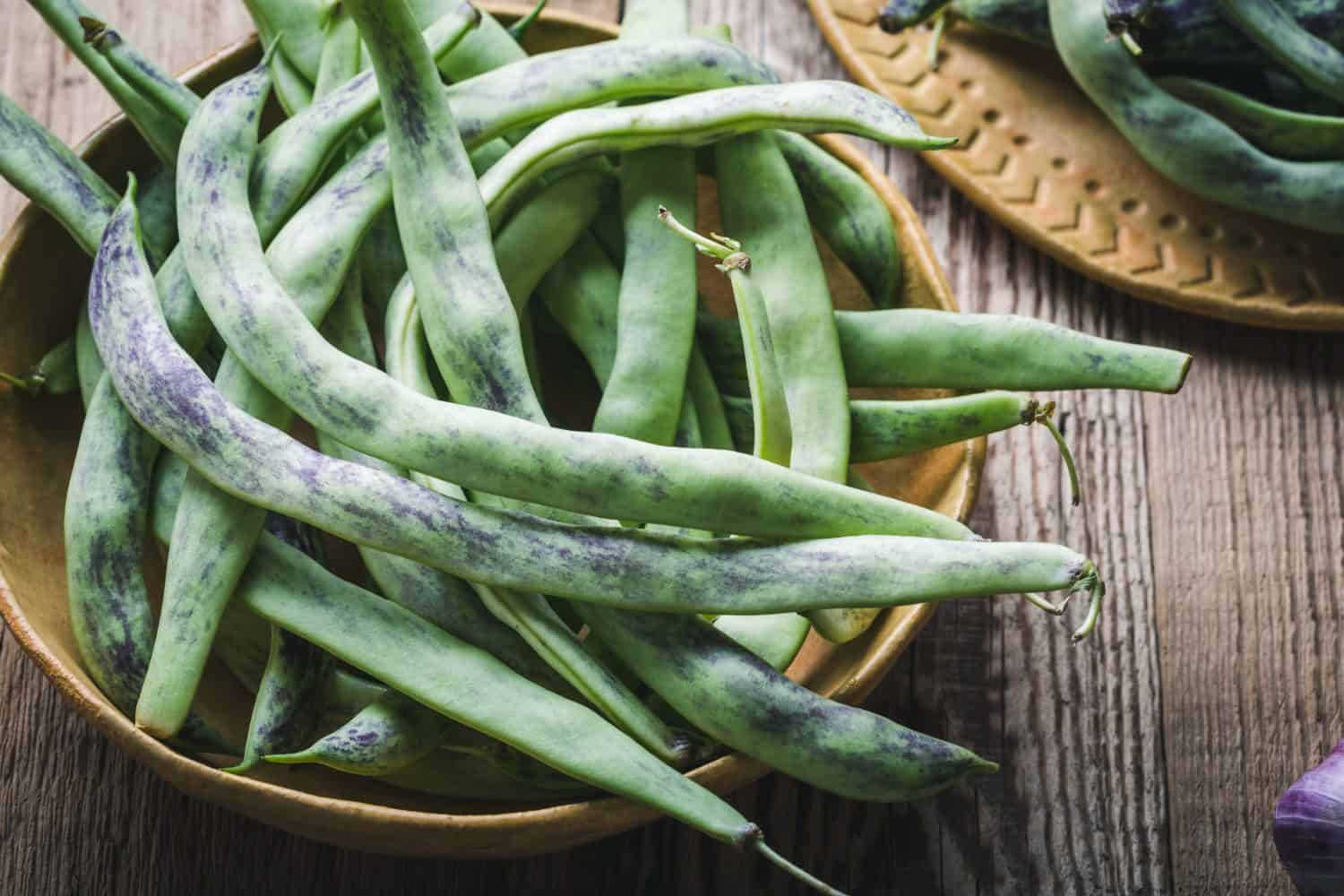
The flavor of
rattlesnake
beans is strong enough to be noticed even in stews.
©istetiana/Shutterstock.com
These beans are cultivars of the common bean and get their name because of the way they curl, snakelike, around their vine. The vines can grow as long as 10 feet. Rattlesnakes are hot weather beans, and the time from sprouting to harvest can be as long as three months. They have a sweet taste when they’re eaten right after picking, but the beans can be dried, rehydrated and cooked. Their flavor is described as intense and won’t get lost in stews such as chili con carne. Rattlesnake beans have good amounts of thiamine, riboflavin, dietary fiber, Vitamin B6, Vitamin C, Vitamin K, and manganese.
18. Red Kuri Squash
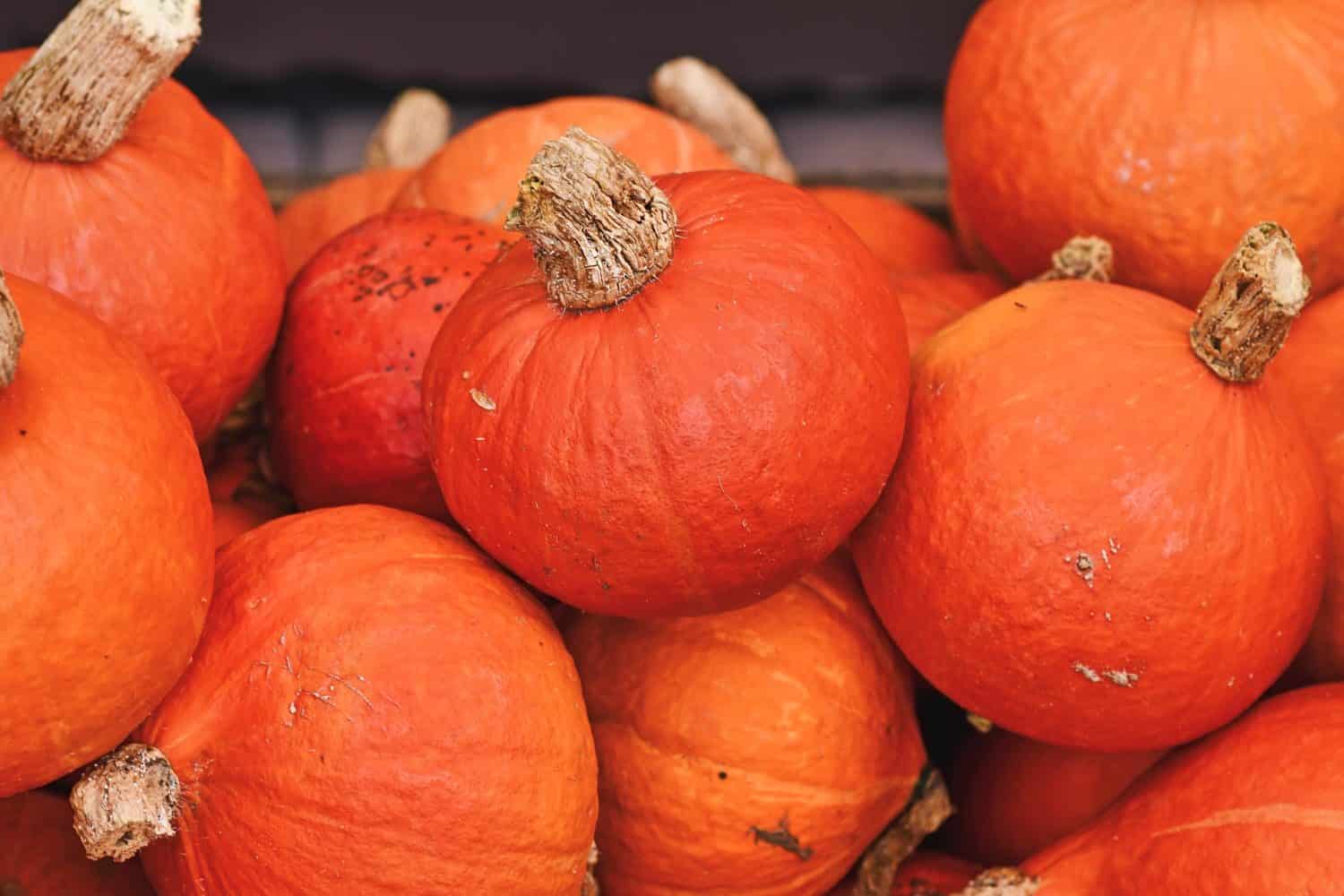
This little winter squash resembles a pumpkin.
©Firn/Shutterstock.com
This winter squash, which looks like a little furrow-less pumpkin, is thought to be native to the Americas even though it’s also called Japanese squash. More orange then red, this squash has a hard shell and yellow flesh that has a sweet taste. Like other types of squash, red kuri squash is cooked in casseroles, stews, and soups. It can be prepared in a number of ways, including baking, steaming, and sautéing. Red kuri squash is also used as a fruit and is found in cakes, jams, pies, and cookies.
The squash provides a good amount of dietary fiber, a great deal of potassium and Vitamin A, and good amounts of folate and calcium.
19. Red Potato
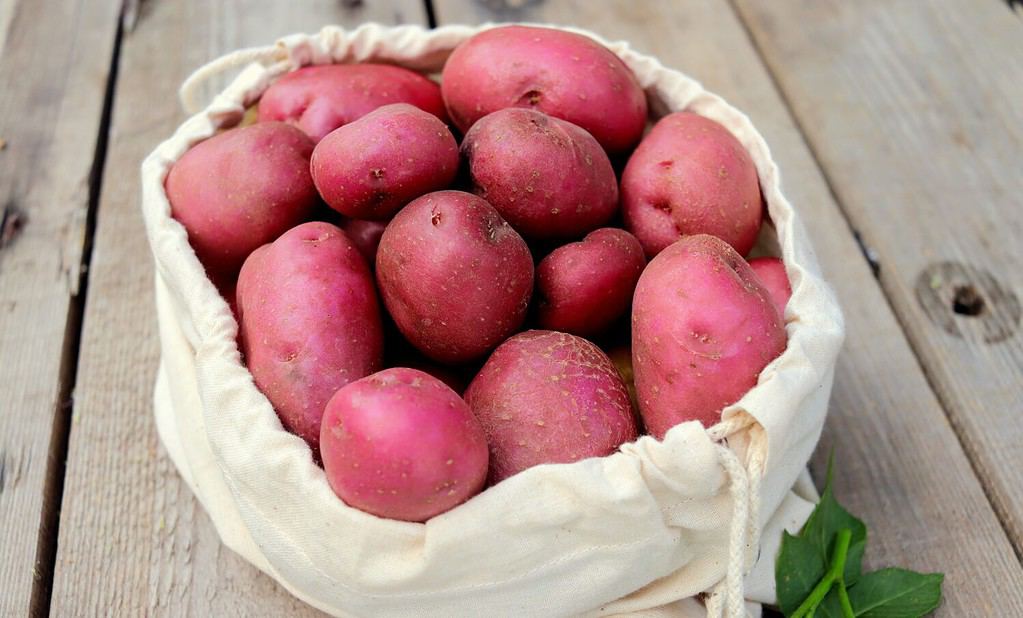
Many red potatoes are sold before they mature.
©Olga Bondas/Shutterstock.com
Potatoes come in a variety of colors, and one of those colors is red. The red color is due to the amount of polyphenol in the potato’s skin. They don’t affect the potato’s nutritional value, which is already substantial. A raw, skinless red potato has good amounts of dietary fiber, magnesium, phosphorus, potassium, and Vitamin C. Red potatoes are often sold when they’re immature. These potatoes are tender and have a sweeter taste as starch hasn’t had time to develop. Because of this, they’re often used in soups and stews as opposed to being mashed or sliced for potato chips or French fries.
20. Rutabaga Greens
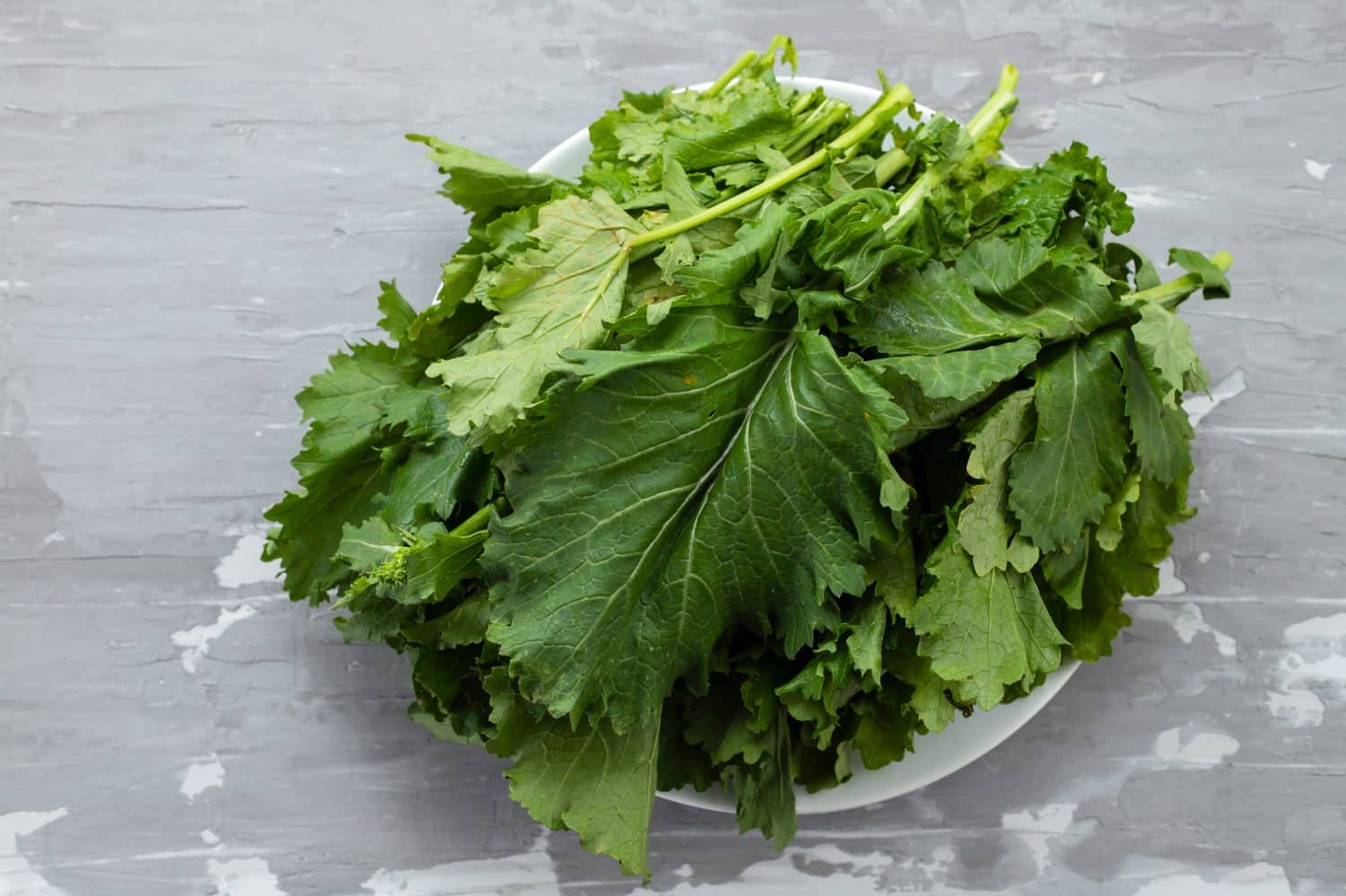
These greens make a delicious pot herb.
©Natalia Mylova/Shutterstock.com
Like its root, the greens of the rutabaga plant are edible. They can be cooked up with the root in a casserole and feature in hearty stews that warm you up in chilly weather. Rutabaga greens can also be boiled by themselves, maybe with a ham hock, as a pot herb.
21. Red Bell Pepper
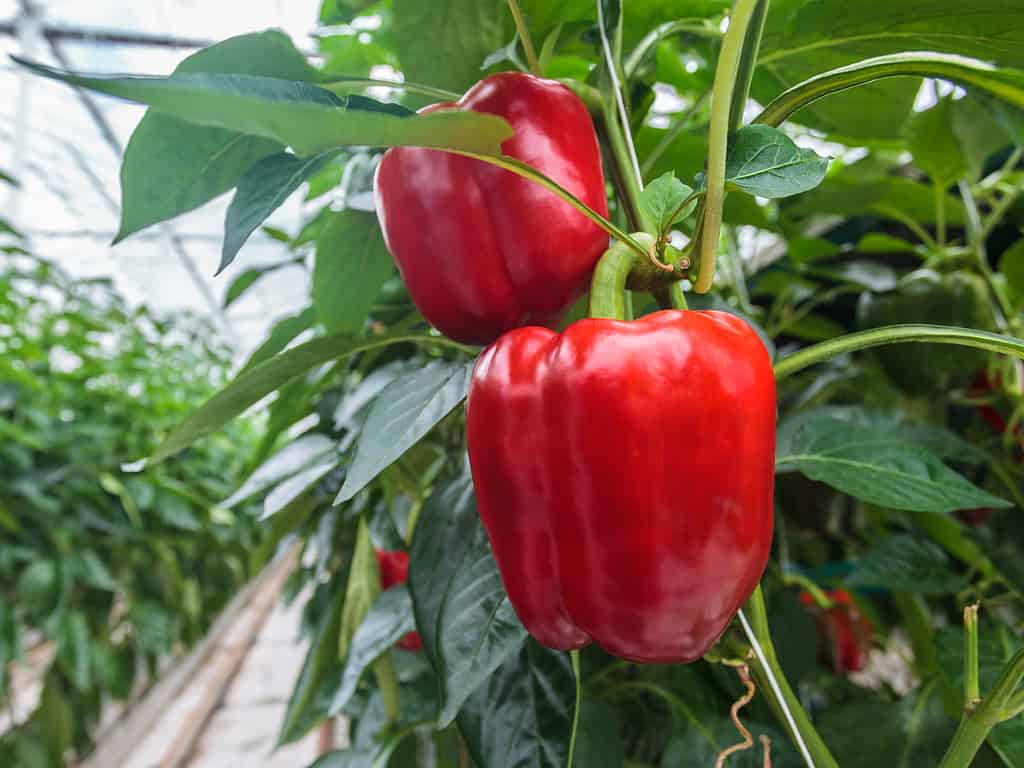
A red bell pepper is a ripe green pepper and is more nutritious.
©iStock.com/DutchScenery
If you leave a green pepper on its plant long enough, it turns into a red pepper. Whatever their color, bell peppers are sweet, with a rating of 0 on the Scoville scale. They’re also one of the many types of fruit used as a vegetable.
Red bell peppers give not only flavor but their bright colors to many types of dishes. They can also be stuffed with meat or flavored rice and baked. But there’s a great difference in the nutritional value of a green vs. a red bell pepper. The red pepper has twice as much Vitamin C and a whopping 8 times the Vitamin A. A red bell pepper is also a good source of riboflavin, Vitamin B6, and Vitamin E.
22. Rapunzel Lettuce
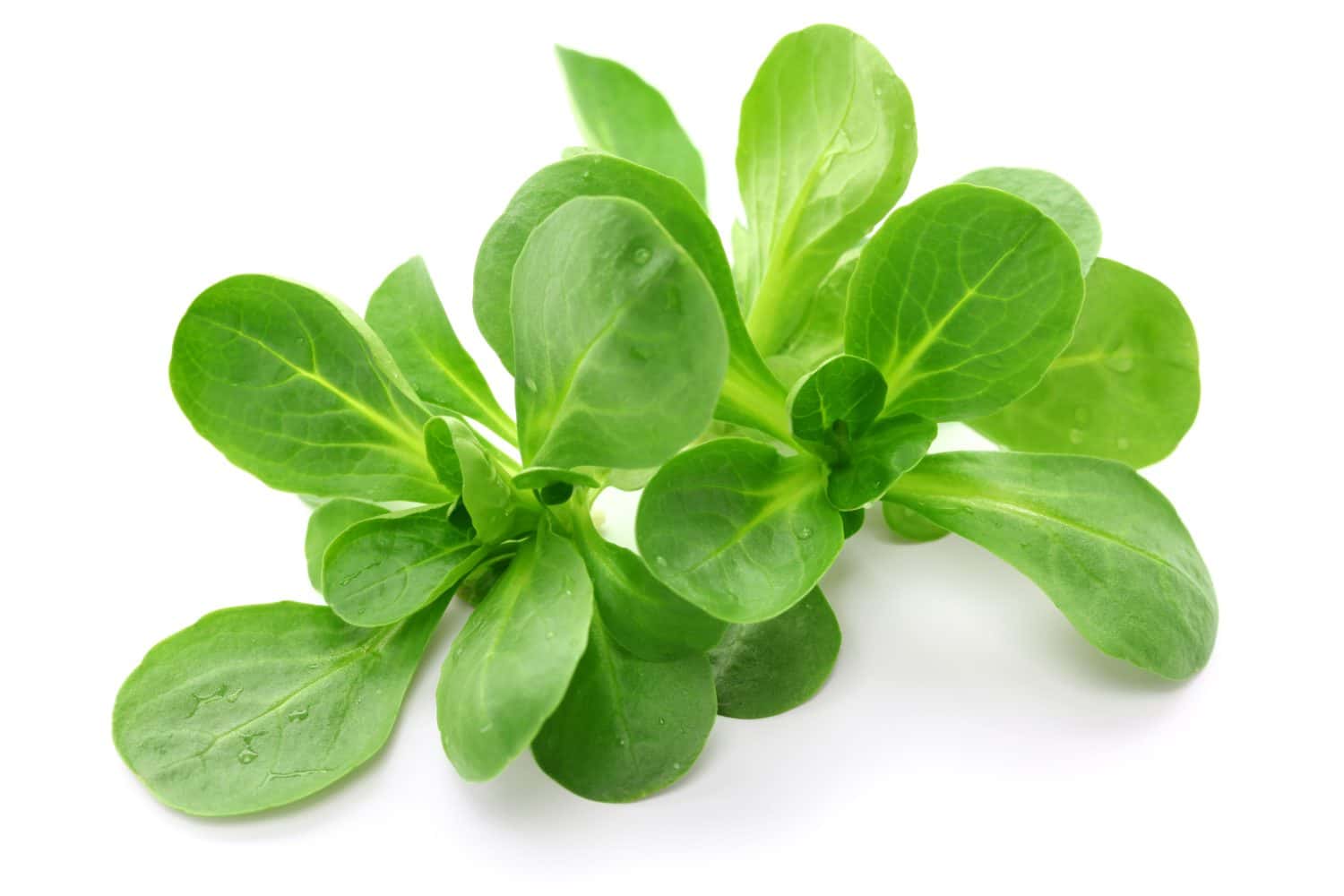
This vegetable that starts with R is also called mache.
©bonchan/Shutterstock.com
More commonly known in the United States as corn salad or mache, this salad green is related to the honeysuckle. It comes from North Africa, Western Asia, and Europe. It’s called Rapunzel in some places in Germany, and it is indeed the herb that Rapunzel’s mother craved during her pregnancy with her.
Rapunzel lettuce is a cool season plant and bolts when the weather gets too warm. It is attractive, with spoon-shaped leaves that grow in a rosette. It is tender to the touch and has a nutty taste. Rapunzel lettuce is rich in Vitamin C and is a good source of beta-carotene, potassium, iron, and Vitamin B6.
23. Rock Samphire
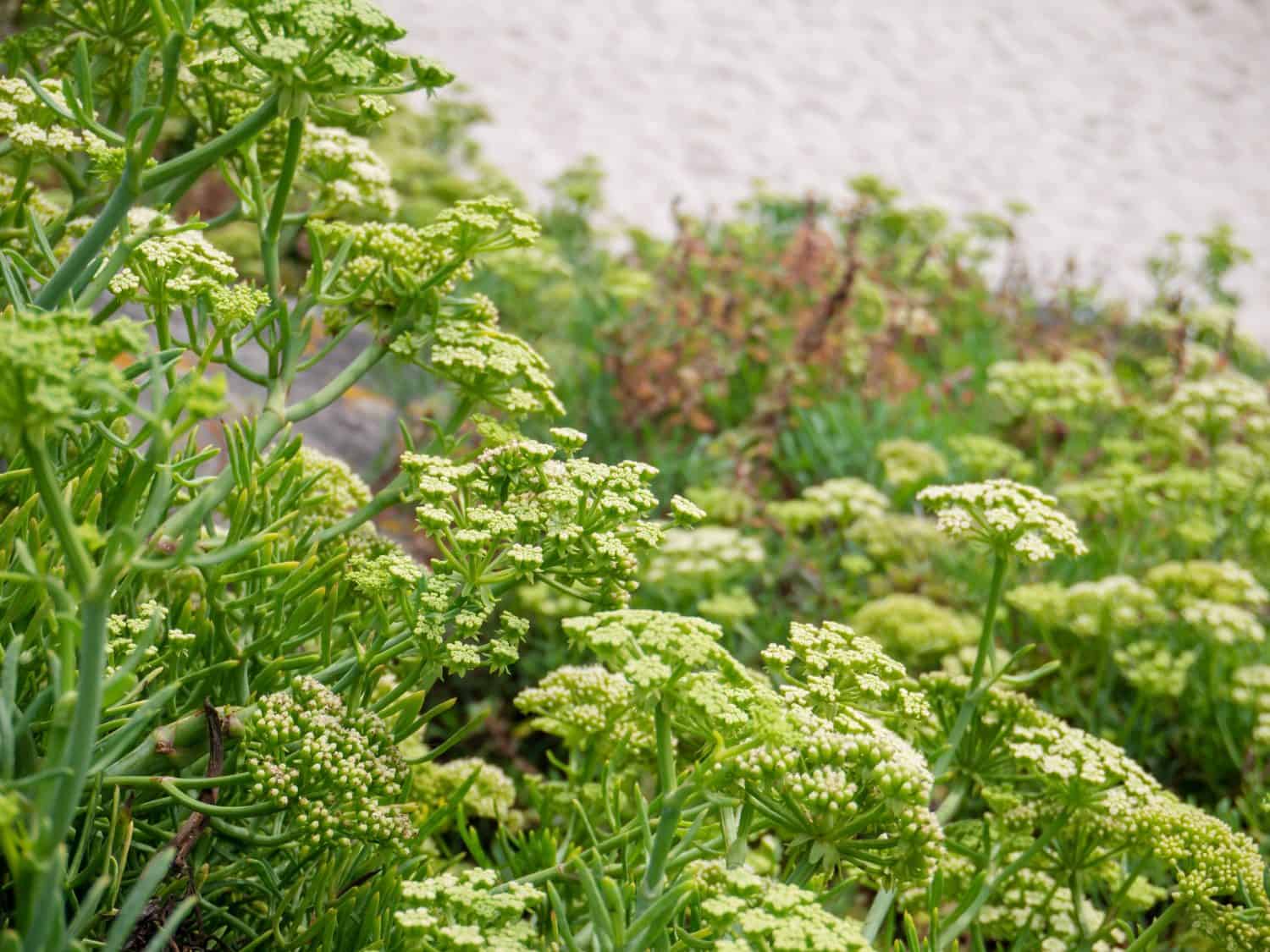
The fleshy leaves of rock samphire have a salty taste like the sea.
©Svetlana Zhukova/Shutterstock.com
This vegetable grows wild along the coast of Europe, Western Asia and North Africa. It’s also found in Macaronesia — not Micronesia — which are islands off the coast of North Africa that belong to Spain, Portugal or Cape Verde. Traditionally, this fleshy, aromatic vegetable was picked from the cliffs, pickled and sent to London to be served as a side dish. It’s now illegal to collect the wild plant, but it grows well in gardens.
The leaves of rock samphire are tossed with salads, or they are pickled along with their seed pods and stems in vinegar. They can also be stored in olive oil. The vegetable, also called sea fennel, has a salty taste and often accompanies meat and fish, and it’s even put on pizza. It’s believed to be high in antioxidants.
24. Romano Beans

These are also called flat beans.
©Caftor/Shutterstock.com
These beans are types of runner beans. Like runner beans, they have edible pods, but their pods are flat and wide. Indeed, their other name is flat beans. Romano beans are best eaten when they’re young and stringless. Beans left to ripen on the vines may grow tough and stringy.
25. Rampion
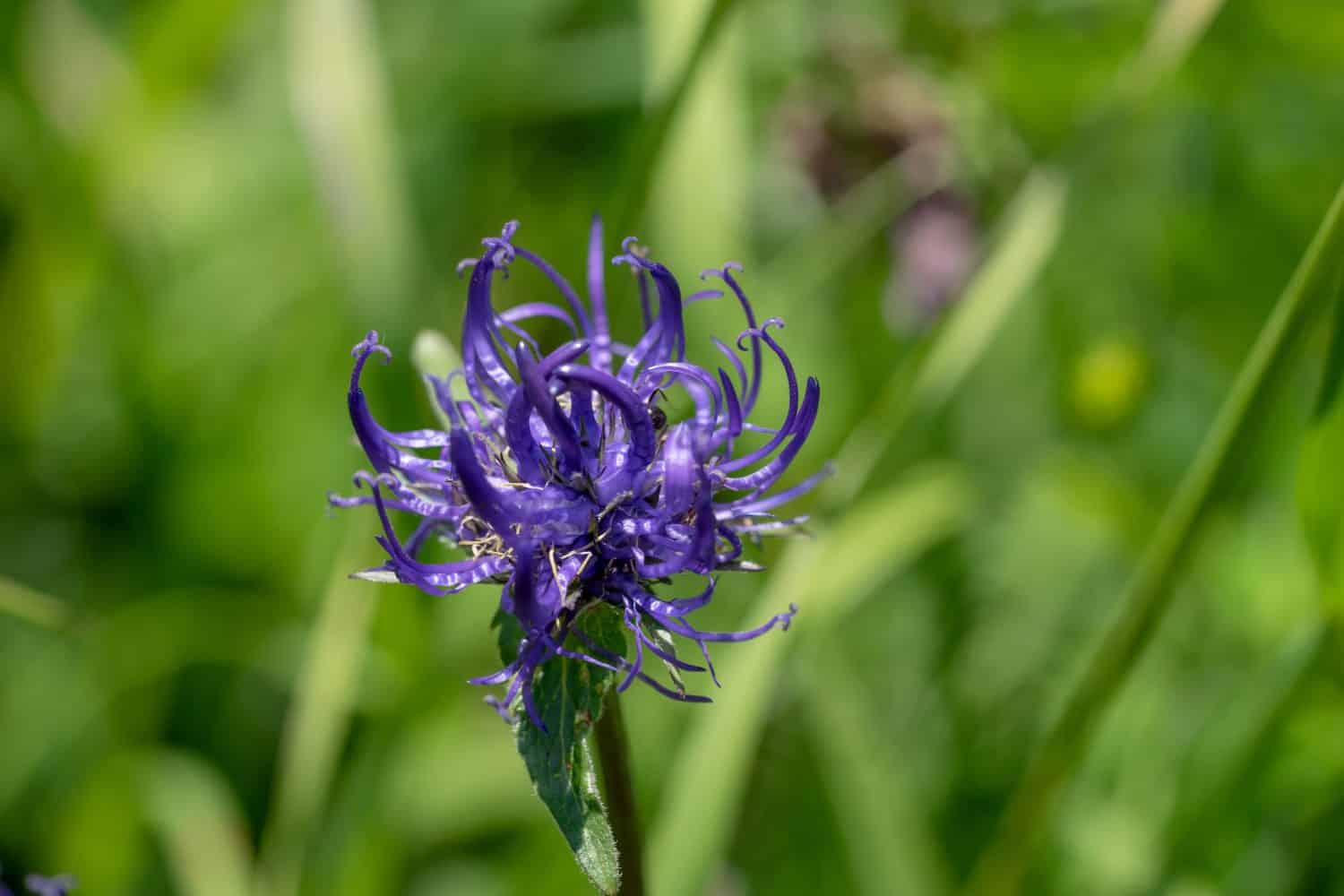
People eat the leaves and root of this vegetable that starts with R.
©kelifamily/Shutterstock.com
Rampion is believed to be the other name for the herb Rapunzel’s mother was craving. Native to most of Europe, it is a type of bellflower. Though its purple flowers beautify a garden, its leaves and long root are eaten. The leaves are used much like spinach, and the root is treated like a radish.
26. Ramp
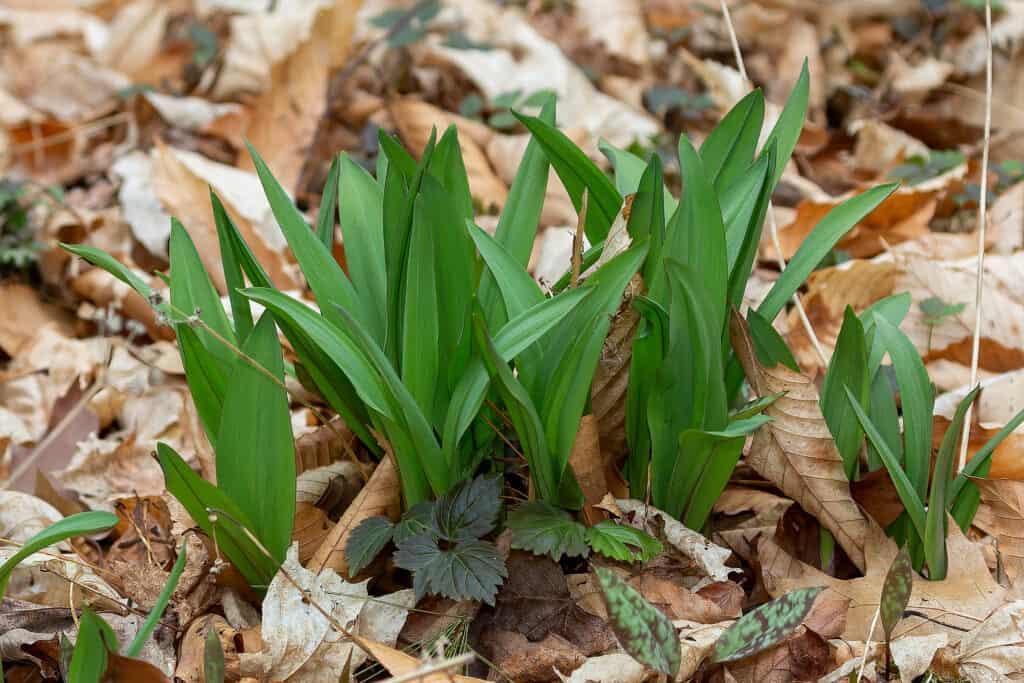
This prized allium grows wild in the North American woods.
©Karel Bock/Shutterstock.com
The ramp, native to North America, is a type of wild allium. There are two varieties: Allium tricoccum var. tricoccum and Allium tricoccum var. burdickii. Neither are grown in gardens and are only found in the woods. They are considered rare in Canada, and in Quebec their conservation status is threatened. Like green onions, both the green and white parts of a ramp are edible. This vegetable that starts with R is said to have a smell like garlic and a flavor like onion and is used in scrambles, fried up with potatoes, pickled and used as an alternative to onions or garlic. A number of towns in Appalachia have ramp festivals.
Thank you for reading! Have some feedback for us? Contact the AZ Animals editorial team.

